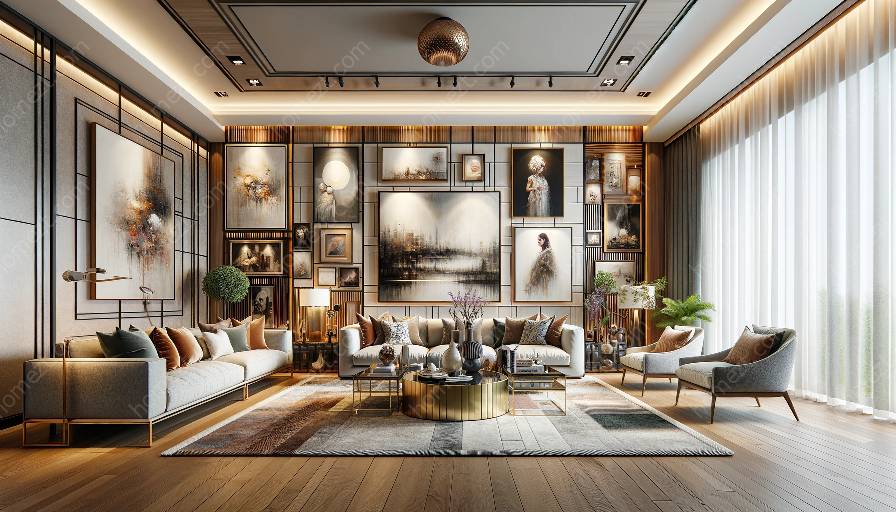Minimalist design and art can coexist to create striking and harmonious spaces. Discover how to effectively incorporate art into minimalist design, explore the principles of decorating with art, and gain insights into minimalist decorating concepts.
The Intersection of Art and Minimalist Design
Minimalist design emphasizes simplicity, functionality, and clean lines. It often features neutral colors, open spaces, and a focus on essential elements. On the other hand, art contributes to the aesthetic appeal and personalization of living spaces.
Effective incorporation of art in minimalist design involves striking a balance between visual interest and simplicity. The art pieces should complement the minimalist aesthetic without overwhelming the overall design.
Choosing Art for Minimalist Spaces
Selecting art for minimalist spaces requires careful consideration. Opt for artwork that aligns with the color palette and aesthetic of the room. Minimalist art, abstract pieces, and monochromatic compositions can seamlessly integrate into minimalist interiors.
Consider the scale of the artwork in relation to the space. Large, bold pieces can make a significant impact in a minimalist setting, while smaller artworks can be strategically placed to add subtle focal points.
Placement and Display
The placement of art in minimalist design is crucial. Create a clean and uncluttered display by incorporating negative space around the artwork. Consider using minimal frames or opting for frameless canvases to maintain the visual simplicity.
Grouping multiple art pieces in a minimalist fashion can create an impactful gallery wall. Ensure that the arrangement maintains a sense of balance and symmetry within the space.
Decorating with Art in Minimalist Spaces
When decorating with art in minimalist spaces, focus on purposeful placement and strategic visual impact. Utilize art to add texture, contrast, and personality to the space while maintaining the essential nature of minimalism.
Embracing Statement Pieces
Incorporating a standout art piece in a minimalist setting can serve as a focal point. Whether it's a large painting, a sculptural installation, or a striking photograph, a statement piece can add character and depth to the space while complementing the clean lines and simplicity of minimalist design.
Integration of Art and Functional Elements
Blend art seamlessly with functional elements in minimalist design. Consider incorporating art into furniture, such as coffee tables with integrated display areas or functional art pieces that serve dual purposes, merging aesthetics with practicality.
Minimalist Decorating Concepts
Understanding minimalist decorating concepts is essential for creating cohesive and harmonious living spaces that effectively integrate art. Minimalism is not about a lack of decoration, but rather, a mindful curation of essential elements.
Embracing Negative Space
Negative space plays a vital role in minimalist design. It allows the art pieces to stand out and creates a sense of calm and clarity within the space. Embracing negative space ensures that the art remains the focal point without competing with unnecessary visual clutter.
Utilizing Monochromatic Schemes
Minimalist spaces often feature monochromatic color schemes. Art can introduce subtle pops of color or maintain the monochromatic harmony. Consider artworks that align with the existing color palette to ensure cohesion within the space.
Symbolism and Minimalist Art
Delve into the symbolism and meaning within minimalist art. Select pieces that resonate with the simplicity and purposeful design ethos of minimalism. Art with strong symbolism can add depth to the space, contributing to a meaningful and intentional environment.






































